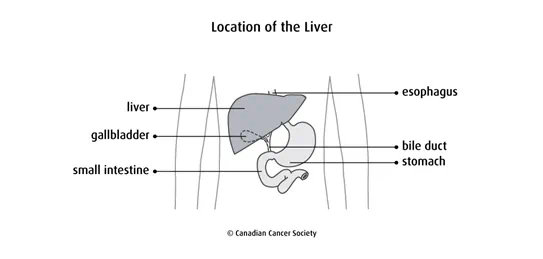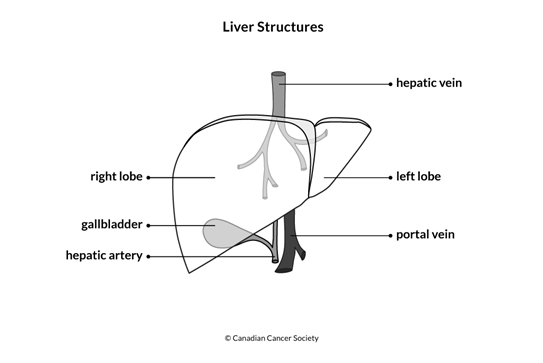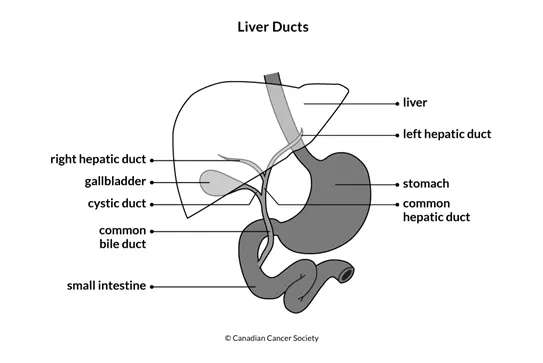The liver
The liver is part of the digestive system. It is the largest solid organ in the
body. In adults, the liver can weigh up to 1.5 kg (3.3 lbs). It is in the
upper-right abdomen, just under the rib cage and below the

Structure
The liver has 2 main lobes. The right lobe is larger than the left lobe. Each lobe is divided into segments.

Blood vessels
Unlike most other organs, the liver has 2 major sources of blood:
- The portal vein carries blood from the digestive system, which removes most of the oxygen in the blood, to the liver. About 75% of the liver’s blood supply comes from the portal vein. This blood has nutrients from the digestive system.
- The hepatic artery supplies the liver with oxygen-rich blood from the heart.
Most of the blood is removed from the liver through the hepatic veins.
Liver ducts
Liver cells (hepatocytes) make bile. Bile is a yellow-green fluid that helps the body digest fat. Bile travels through a series of tubes (ducts) in the liver to the small intestine or to the gallbladder for storage.

The hepatic ducts collect bile from the liver. Two hepatic ducts leave the liver and join to form the common hepatic duct.
The cystic duct leaves the gallbladder and joins the common hepatic duct to form the common bile duct.
The common bile duct empties bile into the first part of the small intestine (called the duodenum).
If there is food in the small intestine, the bile will flow directly from the liver, through the common hepatic duct and common bile duct into the small intestine to help with digestion.
If the small intestine is empty, the bile will collect in the common bile duct until it backs up into the cystic duct and into the gallbladder, where it is stored until it is needed.
What the liver does
The liver plays a key role in digesting the food you eat. You cannot live without a liver. The liver:
- collects and filters blood from the intestines
- makes bile to help the small intestine digest and absorb fats, cholesterol and vitamins from food
- helps break down nutrients for the body to use for energy or to repair and build tissue
- stores some vitamins and minerals
- makes substances to help your blood clot (stop bleeding) when you cut yourself
- breaks down alcohol, drugs and other toxins in the blood so they can be removed from the body in poop (stool) and pee (urine)
Regeneration
The liver has a special ability to regrow parts that have been removed so that it can continue to work in the body. If part of the liver is removed, it will regrow for several months until the missing liver tissue is replaced. Your liver can still work even when a large part of it has been removed.
